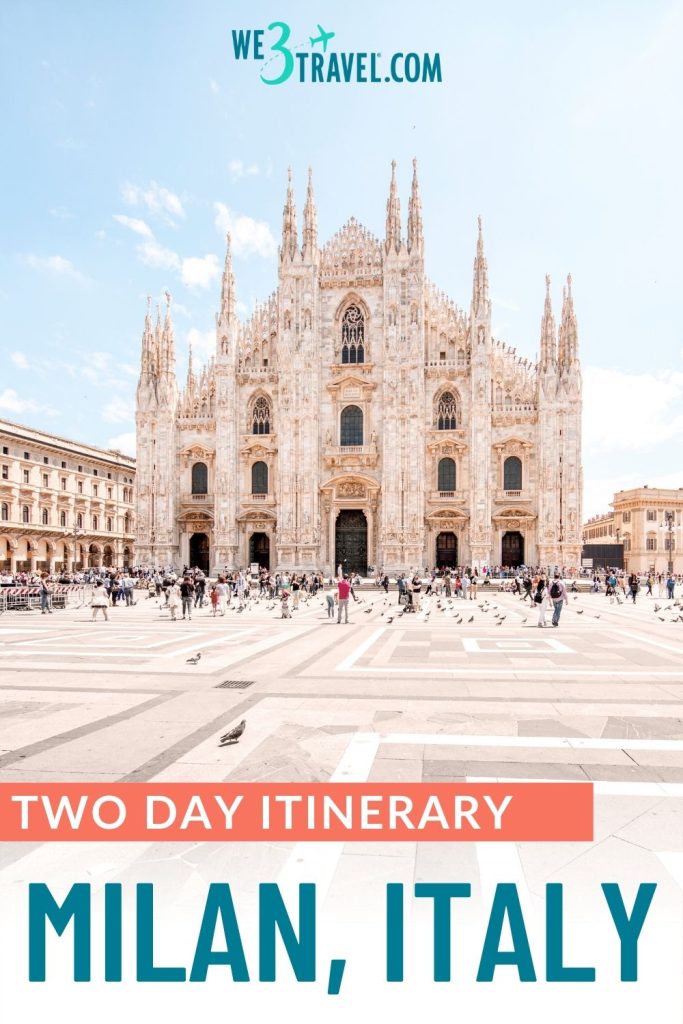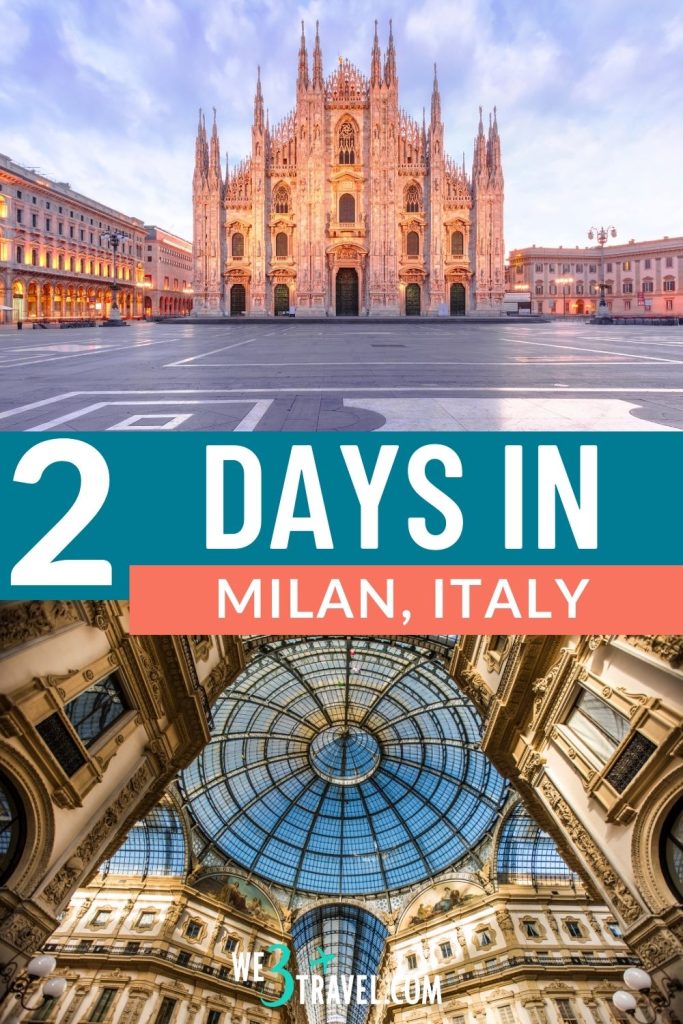Milan, or Milano as they would say in Italian, is the economic center of Italy. Known as a hub for fashion, finance, and opera, this city in Northern Italy operates at a different pace than the laid-back south. While many people seem to skip right over Milan on their way to other destination, you should really take 2 days in Milan to hit all of the “must-see” spots.
With several nonstop flights between Milan and the United States or Canada, and easy access by rail to Florence, Rome, Bologna, Parma, or Venice, Milan works well as a starting or ending point on a trip to Italy. We recently flew into Milan before spending a few days in Piemonte, followed by Lake Como, and finishing up in Milan.
In this two day Milan itinerary, I have provided a detailed breakdown of each day, along with a map of city highlights. If you are able to extend your stay in Milan to give yourself more time or wish to continue to other destinations within Italy, I have also provided options for day trips from Milan, as well as advice on getting around Milan, where to stay in Milan, and some Milan travel tips.
2 Days in Milan Itinerary
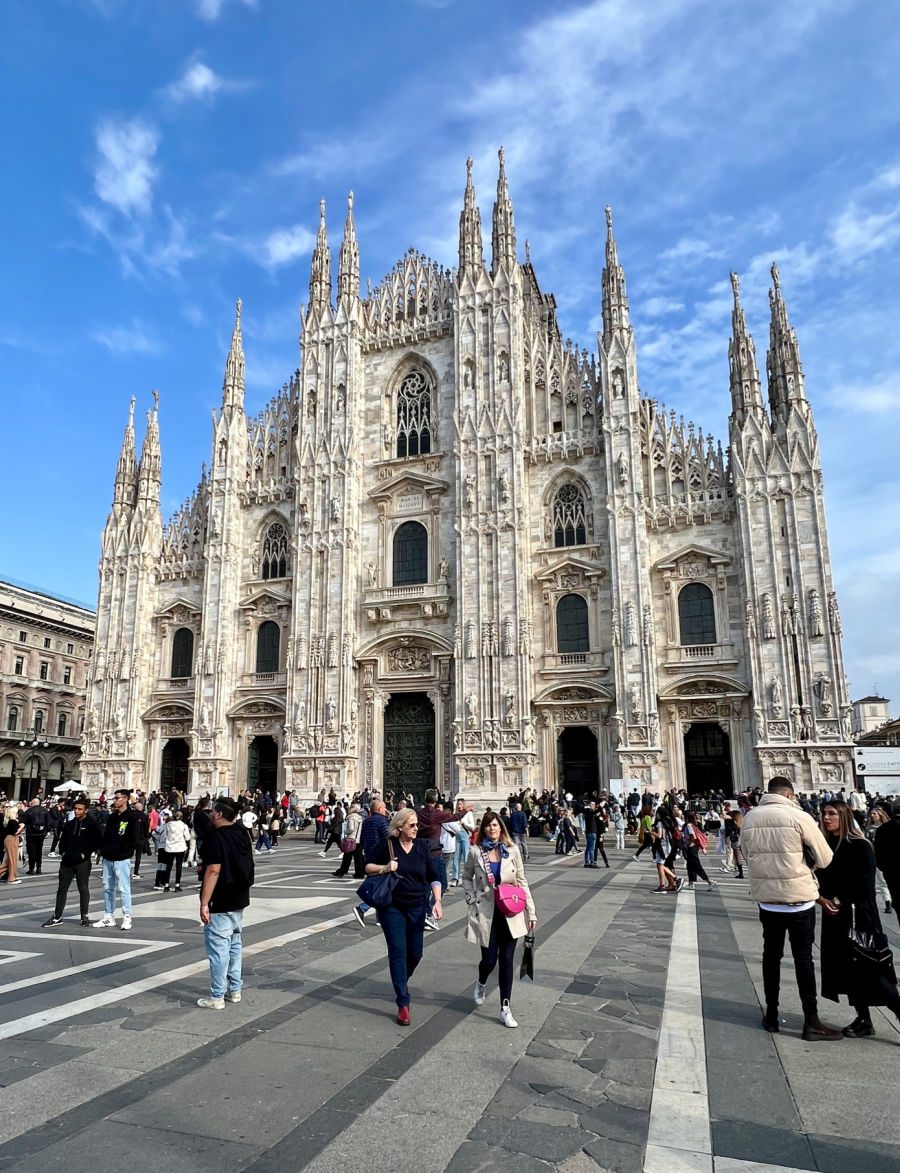
Note: This post may contain affiliate links. If you click a link and make a purchase, I may receive a small commission. All opinions are my own.
This itinerary is designed for a full 2 days in Milan on the ground and covers the attractions included below.
Map courtesy of Google MyMaps
Day 1: Morning
Begin your visit to Milan at the Piazza del Duomo, at the heart of the Centro Storico or the historic center of Milan. The centerpiece is Milan’s awe-inspiring Duomo di Milano. One of Europe’s largest cathedrals, the Duomo di Milano is a gorgeous example of Italian gothic architecture that has been updated continuously throughout Italy’s tumultuous history since 1386. The Duomo has always been funded by the people and is a source of great pride and the marble that is used in its construction give the Duomo its recognizable dramatic facade.
It is highly recommended that you purchase entry tickets in advance to skip the line and avoid crowding, or worse, to avoid getting shut out of a visit to the Duomo altogether. The tickets can be combined to include a visit to the rooftop of the Duomo, the Museo del Duomo (the Duomo Museum), the Archaeological Area, and the Church of San Gottardo.
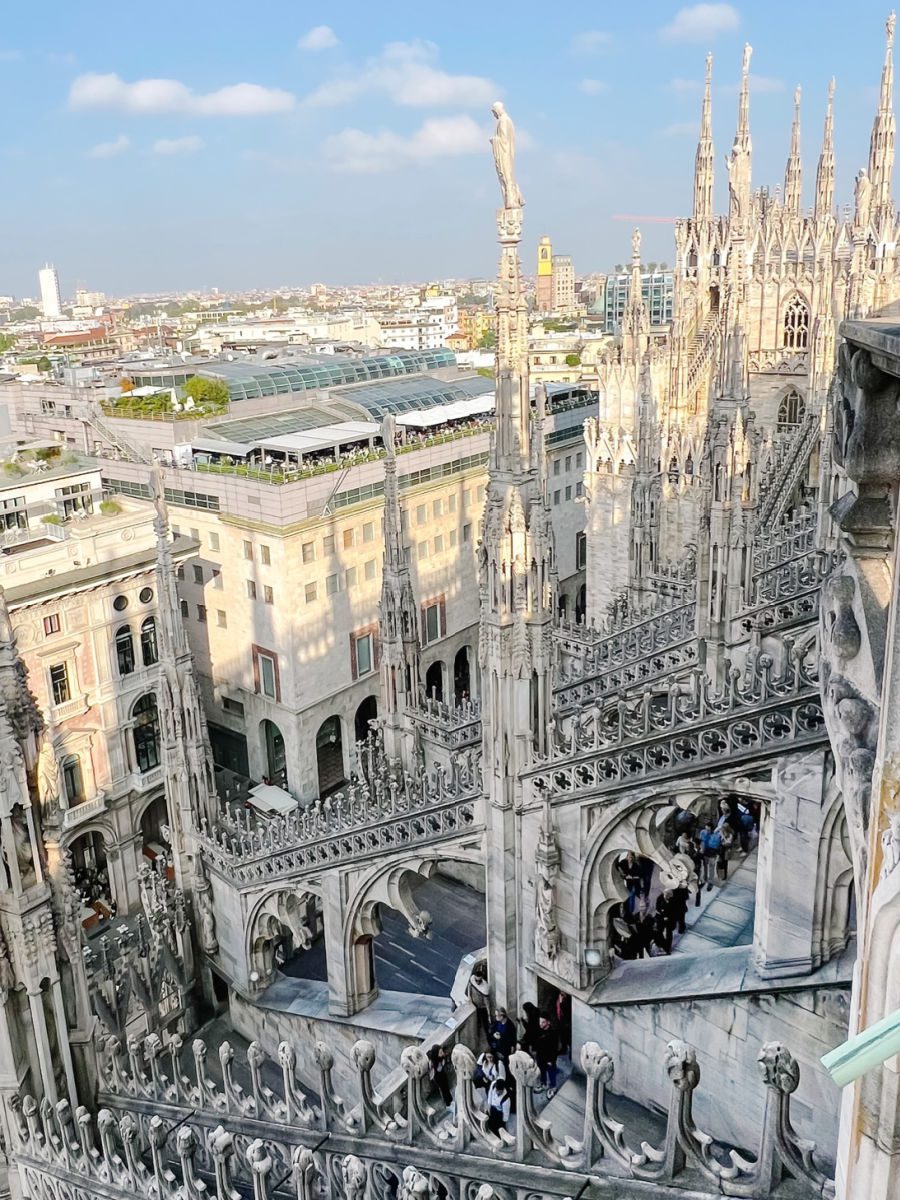
If you don’t want to go inside the church, you can also just purchase a ticket to the rooftop terraces. There is an option to pay extra to take the elevator up to the Duomo rooftop instead of the stairs, though I found that it really was not a difficult climb up to the roof, so I think this is unnecessary if you are in good health.
To understand more about the history of the cathedral and the archeological area underneath, I would recommend booking a guided tour. We took a private Milan City Highlights tour with LivTours, which covered the inside of the Duomo, the Duomo terraces, DaVinci’s Last Supper, and other highlights on our walk through the city.
I’d highly recommend this as an efficient way to see the most important sights in Milan. You can also just take a semi-private tour of the Duomo with Terrace Access if you want to explore at a more leisurely pace.
Remember that female visitors should refrain from wearing sleeveless tops or anything too short, lest they run the risk of getting turned away at the doors. Male visitors are technically supposed to follow modest dress rules as well (e.g., no shorts or tank tops), but I found that the rule for men was generally not enforced (at the Duomo or elsewhere in Milan and the rest of Italy).
The rooftop of the Duomo is accessible on the left side of the Cathedral if you are facing the front, though I recommend saving the Duomo rooftop for the late afternoon. It is really magical to experience the golden hour or sunset (depending on what time of year you visit Italy) up on the rooftop. If it is a swelteringly hot summer day, though, going up to the roof in the morning right before or after visiting the Duomo’s interior might be a good call.
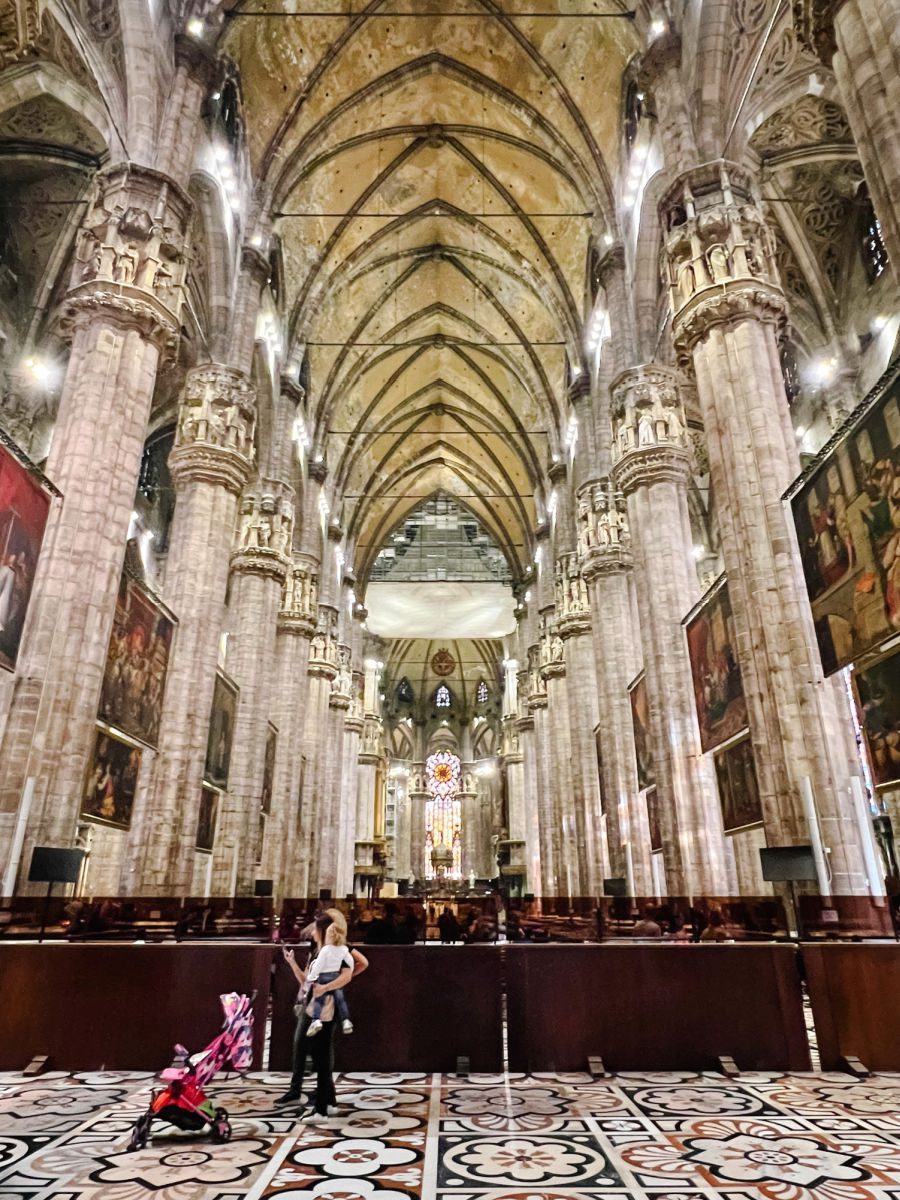
After visiting the interior of the Duomo, you can hop over to the Museo del Duomo, included in most Duomo tickets. The Museo del Duomo contains some beautiful artifacts, like some of the Duomo’s stained-glass windows, as well as descriptions of the history of the Duomo. The small and somber yet beautiful Church of San Gottardo is also accessible through the museum.
If you are not experiencing museum fatigue yet, you can visit either the Palazzo Reale Milano or the Museo del Novecento, which is home to a collection of modern art from the twentieth century. The latter is located in the Palazzo dell’Arengario, a landmark that is a major remnant of Italy’s unfortunate time under Benito Mussolini. Just make sure you check the opening days and hours as these are both typically closed on Mondays.
Day 1: Afternoon
By this time you will be getting hungry for lunch. There are numerous cafes located around the Piazza del Duomo and the adjacent Galleria Vittorio Emanuele II, although these tend to be quite touristy. For a casual lunch or takeaway, walk to the streets behind the Duomo to Cesarino, which has an excellent choice of panini or sandwiches. For something quick you can also try Panzerotti Luini is one of the best places to sample panzerotti, a classic Milanese dish of baked or fried dough filled with various pizza toppings.
Another good option is to head to the top floor of the La Rinascento shopping center to the left of the Duomo (when looking at the front). This has been transformed into a food hall and upscale food market, with multiple restaurants including sushi and classic Milanese (more on this later.)
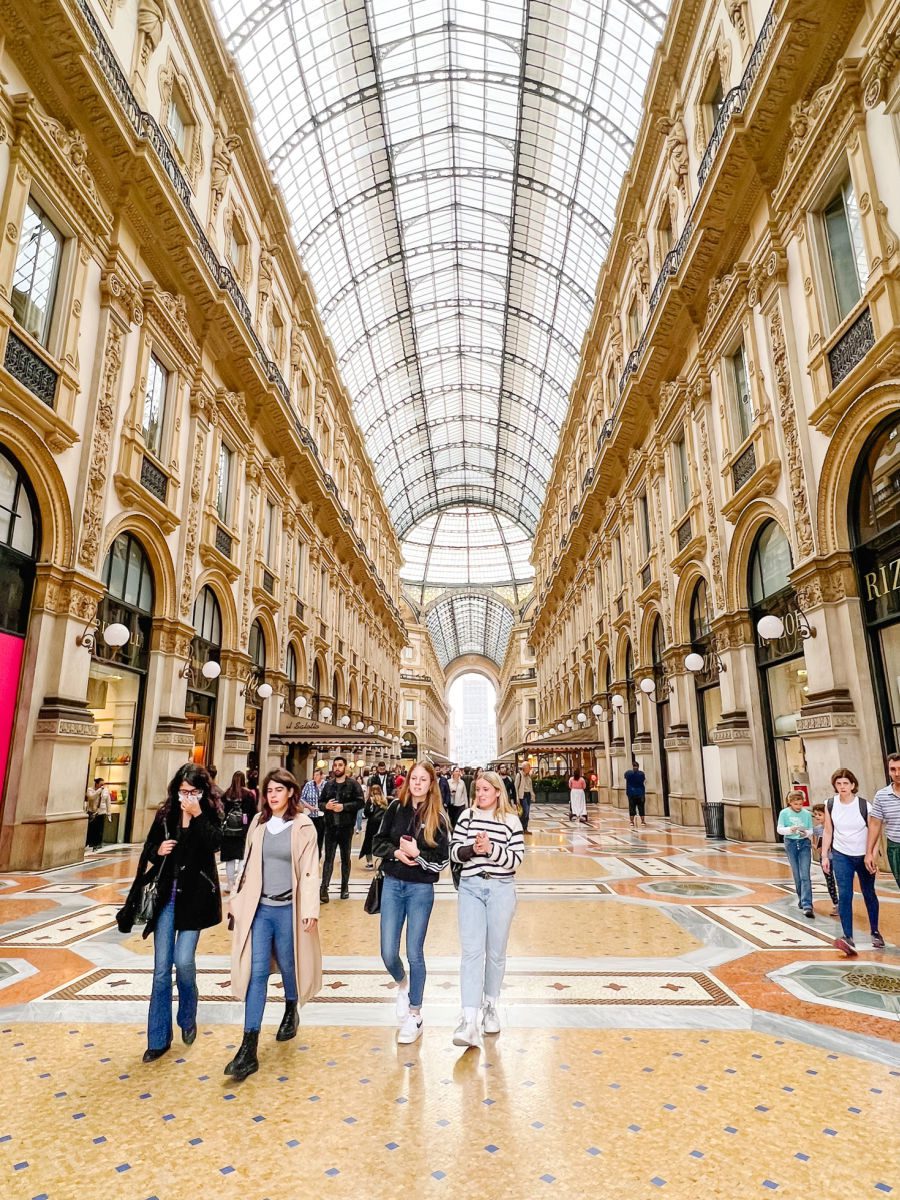
In the afternoon, I would recommend taking a break from museums and spend some time wandering through the Quadrilatero della Moda (also known as the Quadrilatero d’Oro), Milan’s famed fashion district.
Your first stop should be a leisurely wander through the beautiful Galleria Vittorio Emanuele II, one of Milan’s majestic venues for shopping. Covered with glass windows and impressive, nineteenth-century frescoes, the Galleria Vittorio Emanuele II is one of the world’s oldest shopping arcades, built between the 1860s and 1870s under the patronage of King Vittorio Emanuele II, the King of Sardinia and Piedmont who then became the first king of a united Italy in 1861.
Here you will find the oldest Prada store and compete with hundreds of shoppers and wanna-be influencers for perfect photos of these stunning glass-domed ceilings. The Galleria is shaped like a cross, with four entrances, one side opens onto the north side of the Duomo, while another leads to the streets of the Quadrilatero.
Sleek Vespas line the streets of this area full of designer-brand stores selling famed Italian haute couture-like Gucci, Prada, and Valentino. You will also see people lined up outside waiting to gain entry to the most exclusive stores. Even if you are not in the budget to buy anything in this district, it is worth a walk-through.
Day 1: Evening
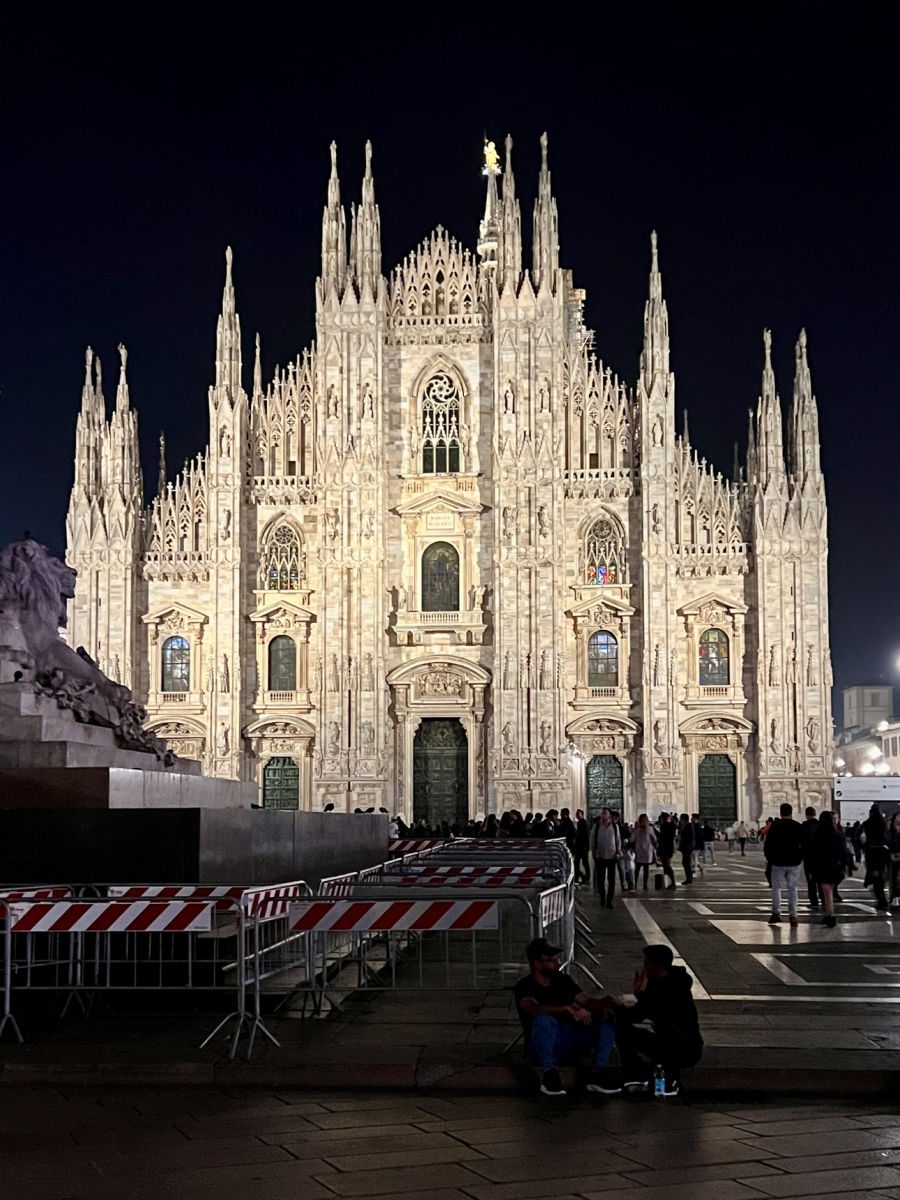
In the later afternoon or early evening, leave the Piazza del Duomo and the Quadrilatero to visit Teatro alla Scala — the La Scala Opera House, one of the world’s most famous opera houses. Tours of the theater are offered during the day. Performances need to be booked well in advance on the theater’s website.
I would recommend having dinner at a rooftop restaurant overlooking the Duomo for an amazing view. We had a fantastic dinner at Maio Restaurant, on the 7th floor of La Rinascento shopping center. The rooftop terrace is the perfect place for a pleasant evening meal or apertivo. Just be sure to make reservations well in advance.
Day 2: Morning
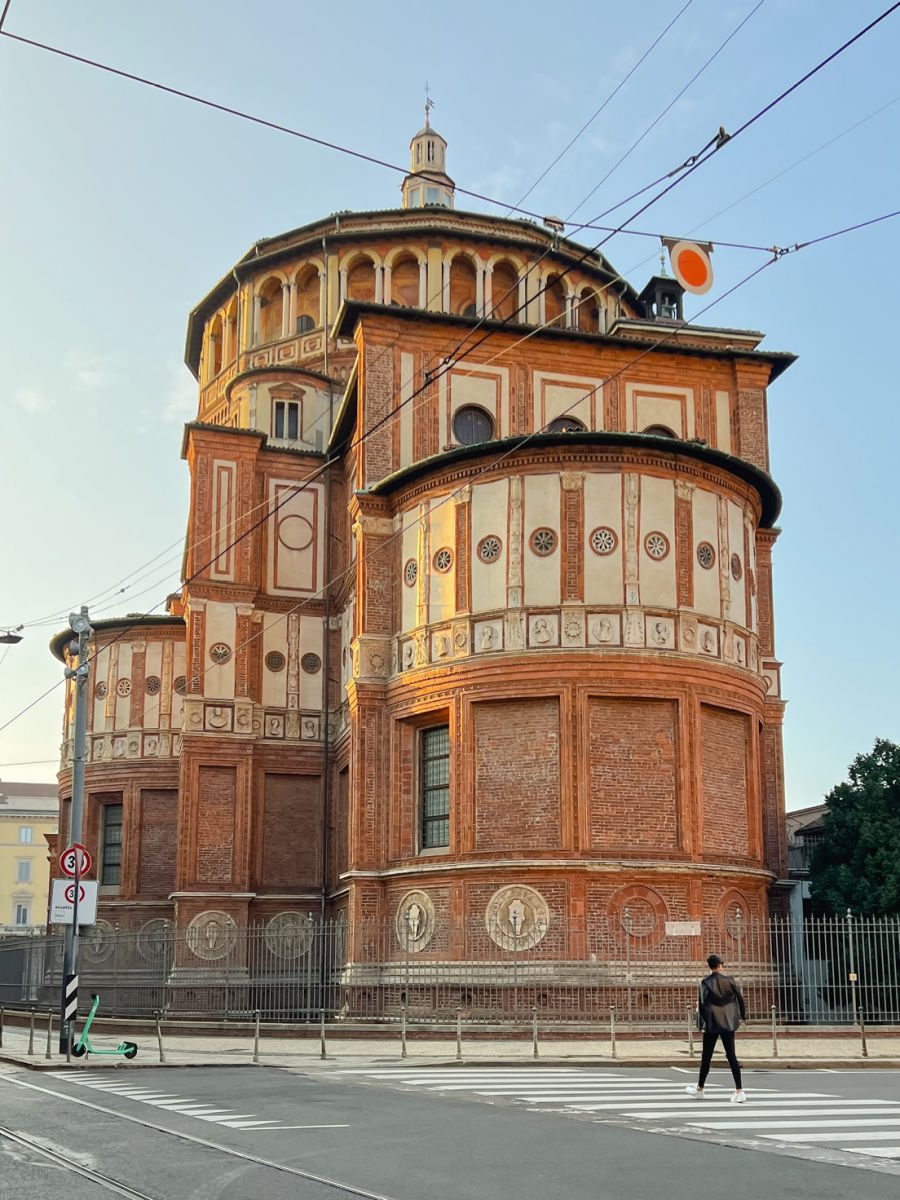
Begin your second day in Milan with a visit to the UNESCO World Heritage Site of the Convent of Santa Maria Della Grazie, another church complex in the heart of Milan famed for its fabled (though decaying) fresco of the Last Supper. Painted by Leonardo Da Vinci from 1495-1498, the fresco underwent a restoration completed in 1999, but it remains so delicate that visits to the refectory where the fresco can be found are heavily restricted.
This means that it is imperative to book visits to Santa Maria Della Grazie to see the fresco well in advance — preferably at least two weeks out (months early if you are visiting during high season). If you are not able to get entrance tickets, your best bet will be trying to book a guided tour online, as tour operators scoop up available tickets very early (plus you can learn more about what makes this fresco so important.)
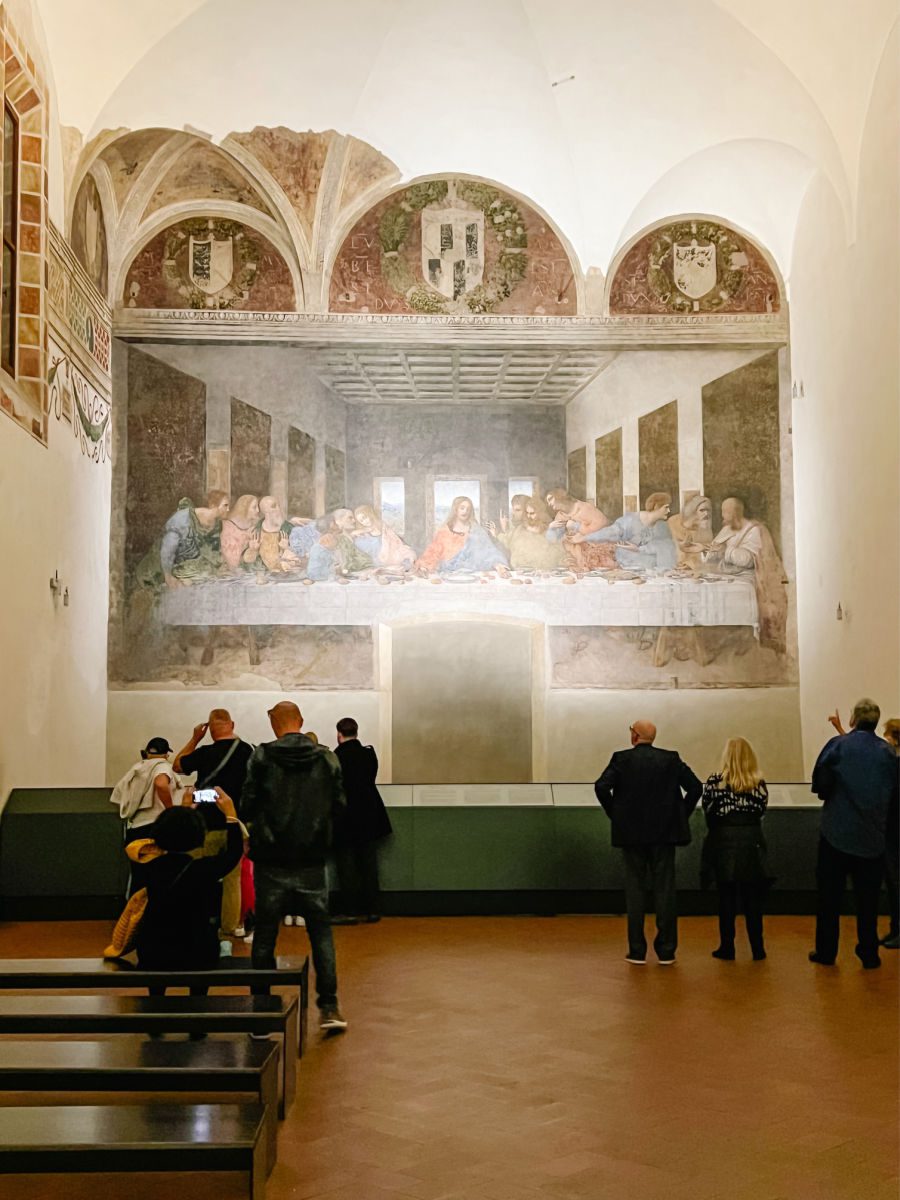
We took a guided tour of the Last Supper with LivTours and it was very helpful to share this visit with an art historian that could tell us much more about the symbolism in the painting, DaVinci’s technique, and the many attempts at restoration than we would ever glean on our own.
Across the street from the convent is La Vigna di Leonardo, or Leonardo Da Vinci’s Vineyard museum— also open to tourists.

If you are interested in visiting another church after Santa Maria della Grazie, consider paying a visit to the Basilica di Sant’Ambrogio, one of the oldest churches in Milan. Originally built in the fourth century A.D., the earliest components of the current structure dates from the ninth and tenth centuries. A gorgeous example of medieval, pre-Renaissance Italian Romanesque architecture and containing impressive paintings and frescoes, the Basilica gets just a fraction of the viewers that Santa Maria della Grazie does, thus making visits serene and peaceful.
Day 2: Afternoon
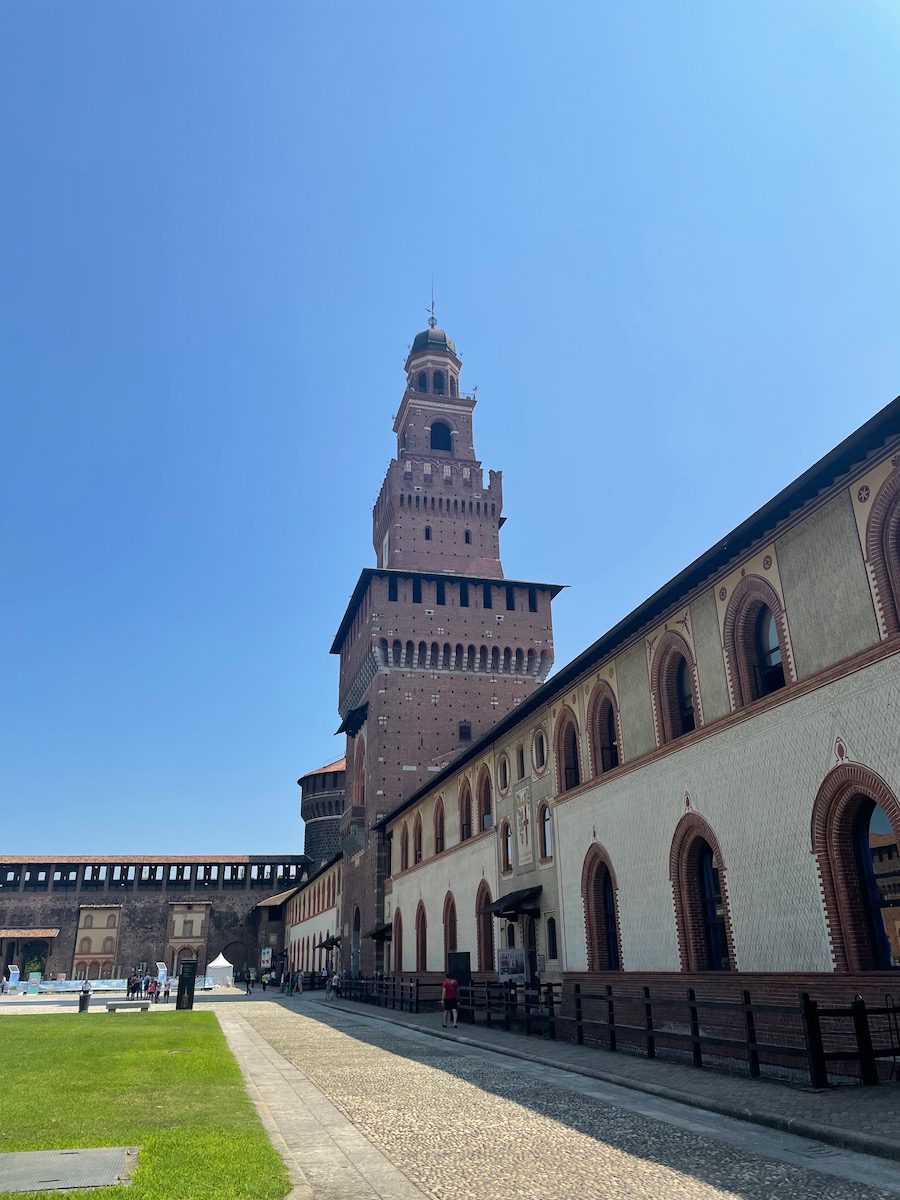
Consider taking a picnic lunch to Parco Sempione, located behind Castello Sforzesco, or to the Giardini Indro Montanelli in the early afternoon. Both are nice places for families traveling with children to relax— they are serene locations where travelers can enjoy some green space and some quiet away from the hustle and bustle of Milan.
Pavé’s selection of delicious, sweet or savory baked goods make for a nice meal to bring for the picnic. After you finish your meal and have relaxed and people-watched enough, visit the Castello Sforzesco complex and museum in front of the park, next to the Cadorna metro station. The castle itself, built in the fifteenth century, is stunning on its own— it really looks and feels like a castle from the medieval ages that you would read about in books or see in movies, making this a fun stop for children.
In addition to its architectural appeal, though, Castello Sforzesco also boasts an impressive collection of and fine arts, including one of Michelangelo’s last works. Tickets should be booked in advance, and it is worth noting that entry to Castello Sforzesco is free on the first and third Tuesdays of the month in the afternoons.
If time permits after Castello Sforzesco, you can try visiting another one of Milan’s world-class museums. Admire famous paintings by Leonardo Da Vinci, Tiziano, and Caravaggio at the Biblioteca Pinacoteca Accademia Ambrosiana (the Ambrosian Library), as well as its famed reading room. Tickets need to be booked in advance.
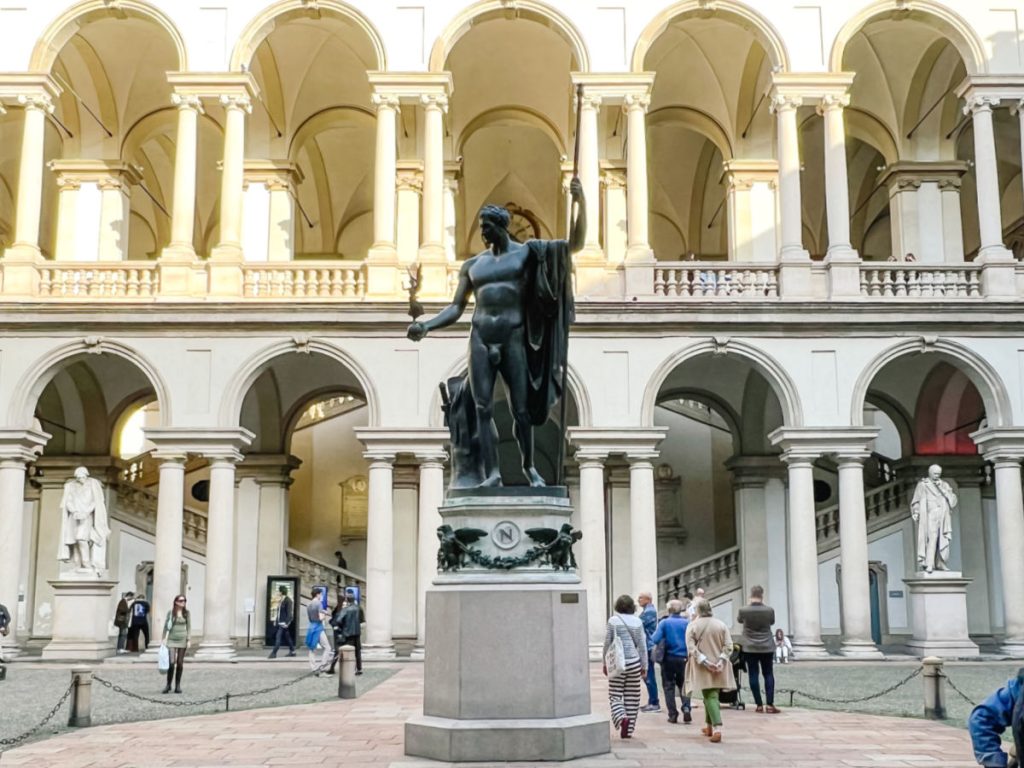
You can also do this at the Pinacoteca Brera, located in the Brera District, and home to another impressive collection of medieval and renaissance art from Northern Italy. Tickets for the Pinacoteca Brera need to be booked online in advance.
If none of these museums interest you, you could visit the Cimitiero Monumentale, a massive, nineteenth-century necropolis with gaudy tombs and mausoleums. Of note, the cemetery contains a Jewish section that includes a memorial to Milan’s Jews who were murdered (or martyred, according to the architects of the memorial) by the Nazis during the Holocaust.
Of course, I always find a good food tour is another excellent way to get to know a new city!
Day 2: Evening
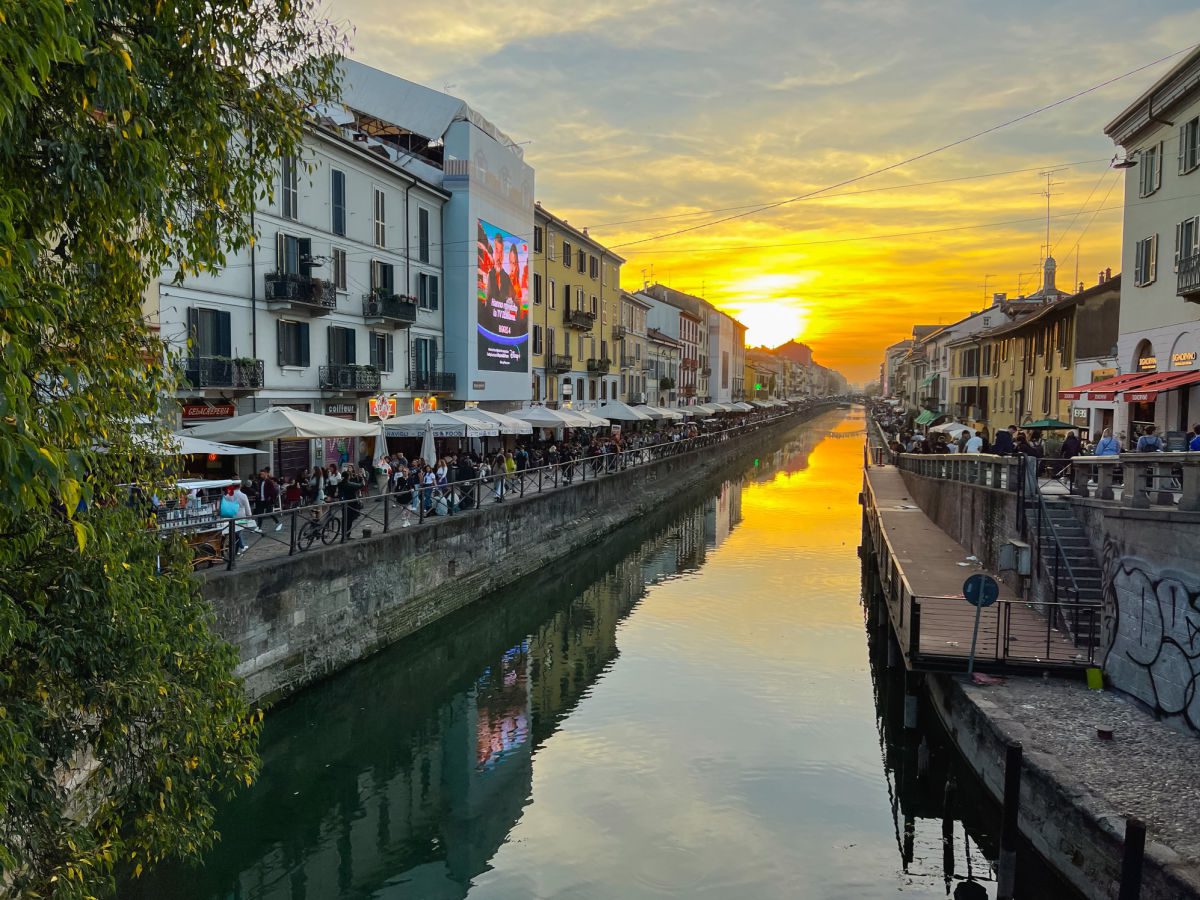
If you are not exhausted from a day of art museums (or if you are and need a change of pace), try visiting the Navigli District with its picturesque canals or navigli, the construction of which began in the twelfth century. Leonardo Da Vinci engineered a system of locks for the canals in the fifteenth century, and thanks in part to his mastery, visitors to Milan today can enjoy this quaint neighborhood of artisanal shops, restaurants, and bars, as well as an Antique Market that takes place on the last Sunday of every month.
For dinner you can stop in at one of the many restaurants that line the Grand Canal.
Where to Stay in Milan
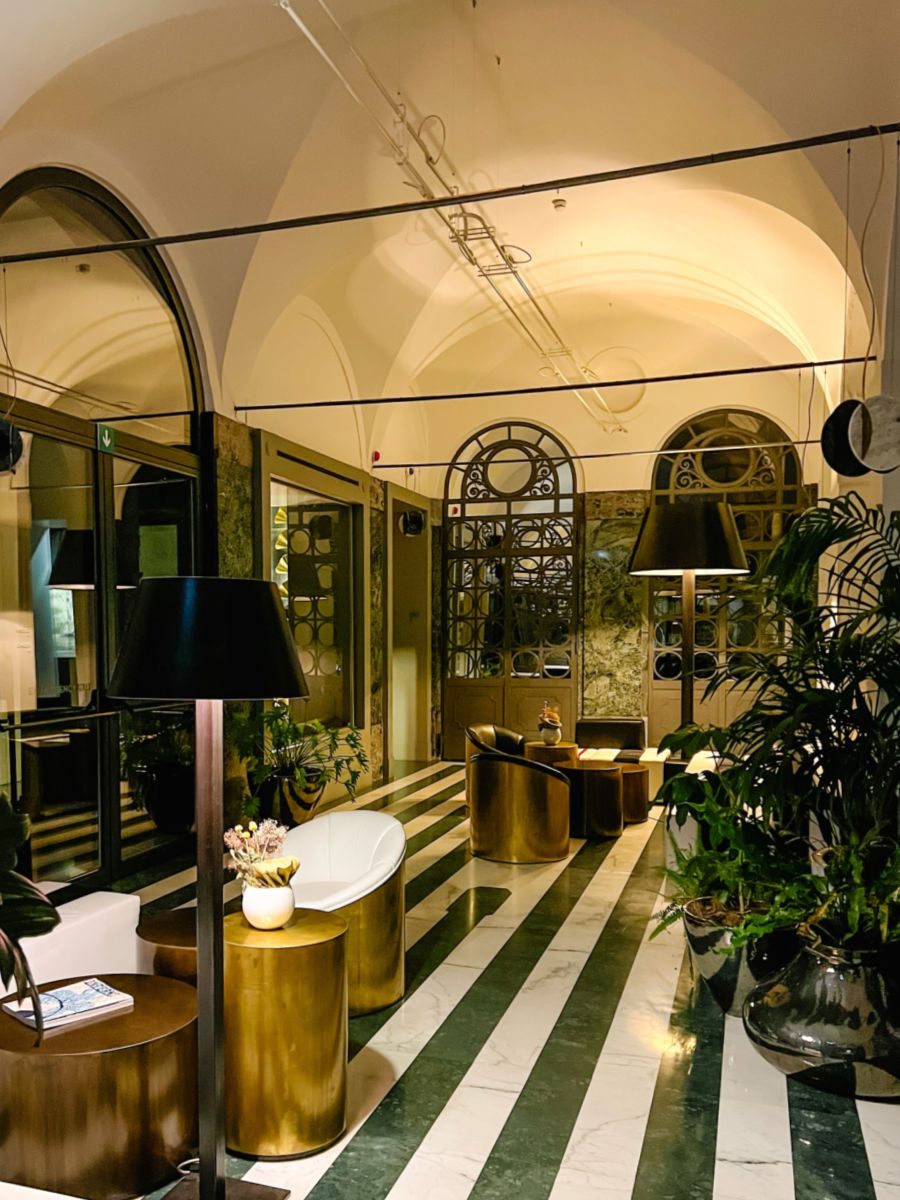
Milan offers a massive selection of hotels at every price point and in many different neighborhoods. I suggest finding a hotel that fits your price point in a location that is convenient for you. I’ve had the opportunity to stay in a couple of different places and one that I recommend the most is the Senato Hotel Milano.
Senato Hotel Milano is a boutique hotel just outside of the Quadrilatero shopping district and only a 15-20 minute walk to the Duomo. The Senato offers stylish decor and helpful service at a reasonable price given the location. You can enjoy breakfast on site or a late-night cocktail at the cafe with a hidden courtyard garden. If you visit in the warmer months, you can even take advantage of the secret rooftop garden for a lovely green space in the heart of the city.
When I returned to Milan by train, I stayed at the Hilton Milan, just a block from the Central train station. While I found this location convenient for train travel and ideal for grabbing a quick bite or drink at the Mercato attached to the station, it was much further to the Piazza del Duomo (30 minute walk). However, the rooms were larger and the full-service hotel offers the amenities many travelers expect (plus the ability to use or earn Hilton Honors points.)
Another option in the Lazzaretto neighborhood, which is within walking distance of the Centro Storico as well as Milano-Centrale and Milano-Porta Garibaldi, is the Worldhotel Casati 18. This is a four-star hotel is conveniently located if you want easy access to all the must-see places and transportation hubs.
Find more places to stay in Milan:
Day Trips from Milan
If you have more time in Milan, or want to start in Milan and then visit other destinations within Northern Italy, here are some of the top day trips from Milan.
Italy’s Lakes
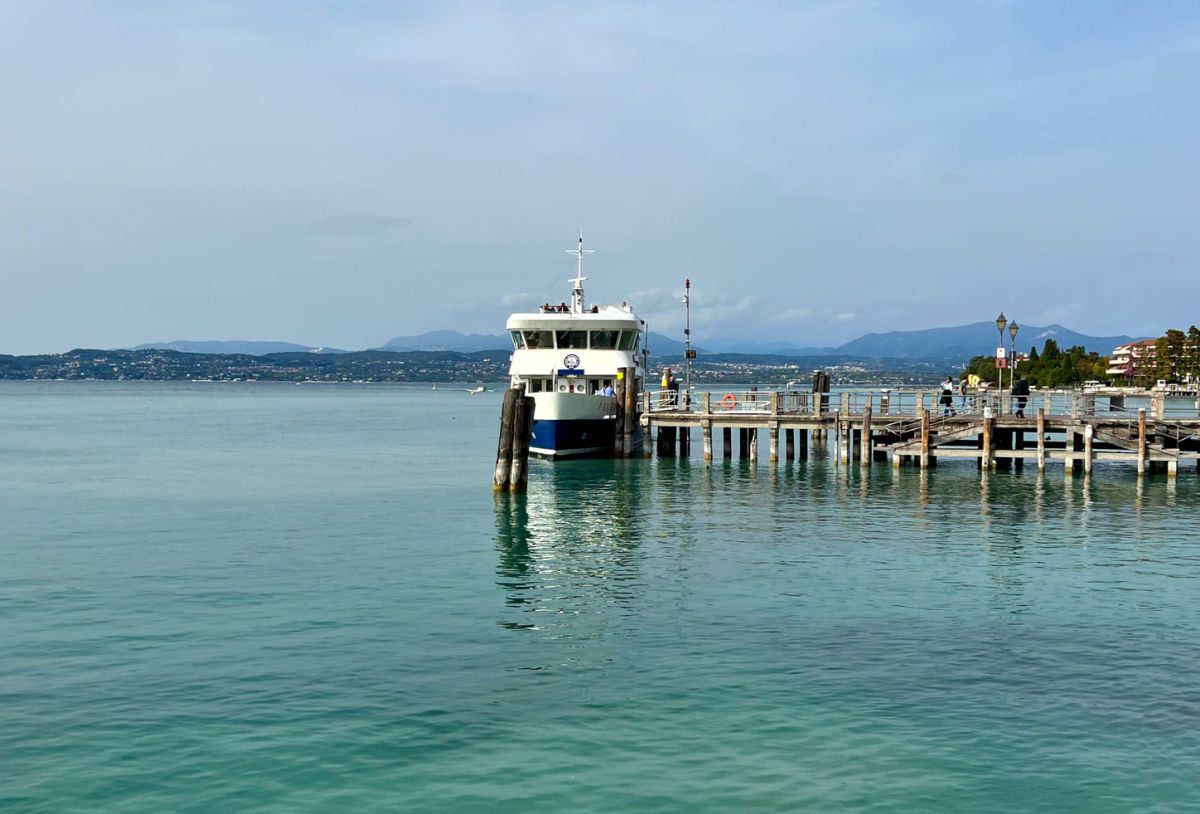
Milan is an easy base for taking day trips, although staying in Milan for an extended period might end up being more expensive than staying elsewhere in Italy. However, if convenience rather than price is more important for you, then why not make use of Milan’s location as an opportunity to take day trips to some of Northern Italy’s pristine lakes, like Lake Como, Lake Lugano, or Lake Garda.
Access Lake Como by taking the train from Milano-Centrale (Central Station), Milano-Porta Garibaldi, or Milano-Cadorna to Lecco or to Como and then continuing on by bus or boat to some of the lake’s most frequented spots like the picturesque town of Bellagio.
If you don’t want to deal with the transportation headaches or wonder what to do when you get there, I’d recommend booking a day trip tour.
Piedmont (Piemonte)
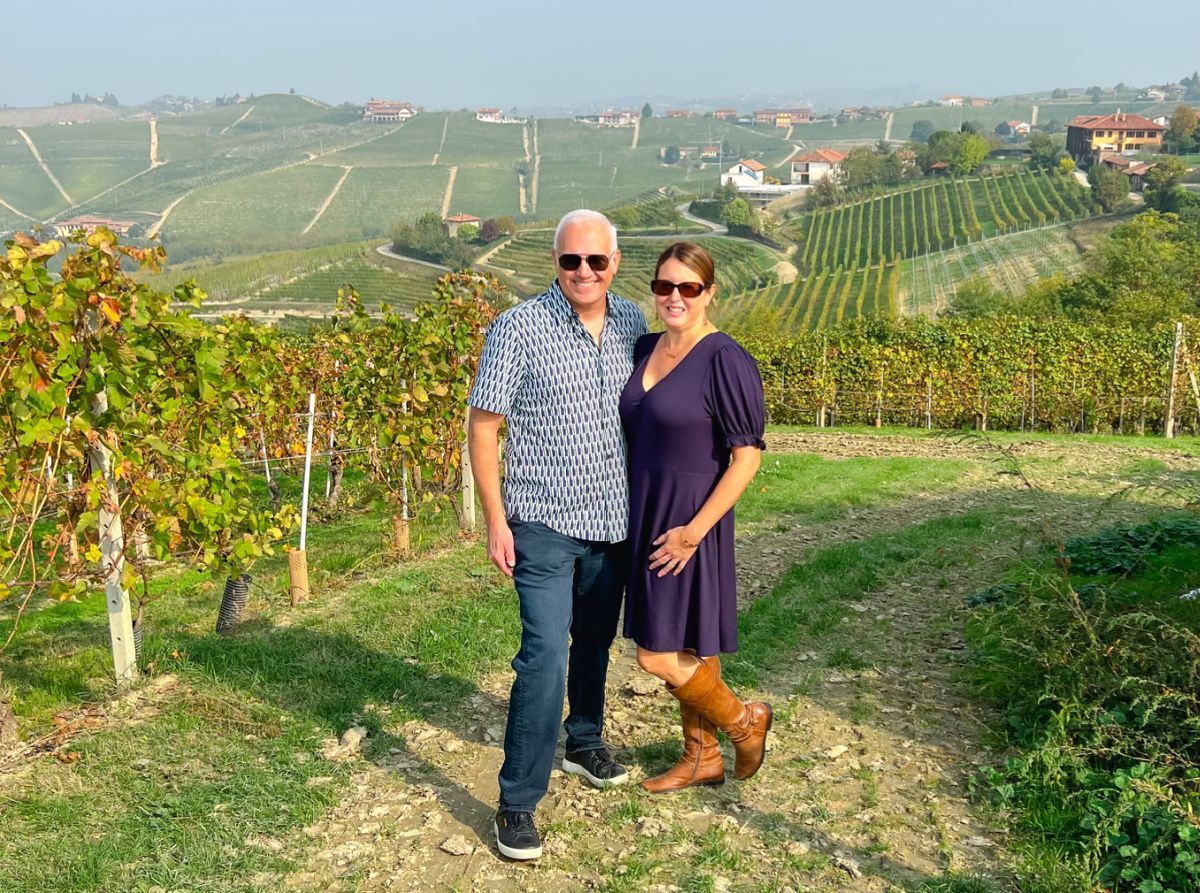
The Piedmont (or Piemonte) region equals or even bypasses Tuscany when it comes to rolling hills, Medieval towns, and row upon row of grape vineyards. This large region takes days or weeks to properly explore, but it is possible to get a taste of the bounty of this region, known for its white truffles, hazelnuts, and wine, with just a day trip.
Trains from Milano-Centrale or Milano-Porta Garibaldi to Torino (Turin) can take as little as one hour, but I would recommend either taking a Barolo or Barbaresco wine tour to the Piedmont region or renting a car.
BeRgamo and Brescia
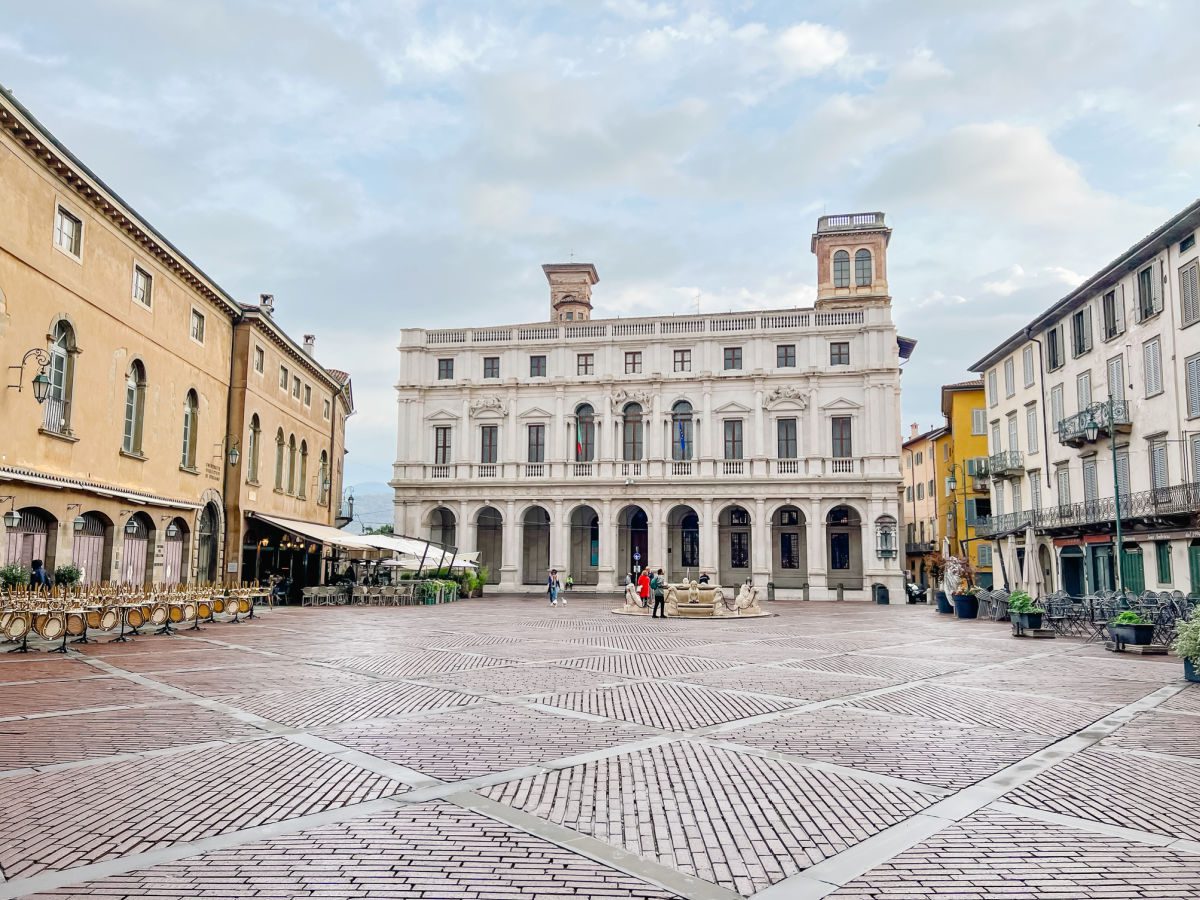
One of my biggest surprises on my recent trip to Milan was the day trip I took to nearby medieval cities of Bergamo and Brescia. They can be visited separately or together. If you don’t have a rental car, you can take the train. Brescia is a 36 min to 1 hr 8 min train from Milano-Centrale and Bergamo is a 48 min to 1 hr 9 min from Milano-Centrale or Milano-Porta Garibaldi. Another option, which is what I did, is to book a trip with stops using DayTrip. The drivers aren’t guides but they will drop you off in the town center to explore on your own and pick you up at a designated time.
I loved my visit to the Città Alta (Upper City) of Bergamo. While Lower Town is quite large, the Upper City maintains the authentic charm of an old Italian borgo. It is quiet and you are much more likely to run into locals going to church, gathering with friends, or stopping into their favorite pasticceria than see many tourists. There are many beautiful churches to visit and you can spend time people watching over coffee in Piazza Vecchia. Follow the path down the hill to the city gate and you will see locals jogging and biking along the Medieval city walls.
You can also visit the Brescia Castle in just an afternoon (although if you want to see more of town you should probably plan a separate day trip). This Medieval castle sits high on the hill above Brescia, offering beautiful views. You can climb upon the battlements, walk across the drawbridge, visit the tower and ramparts, or see the arms museum in the keep.
Emilia-Romagna
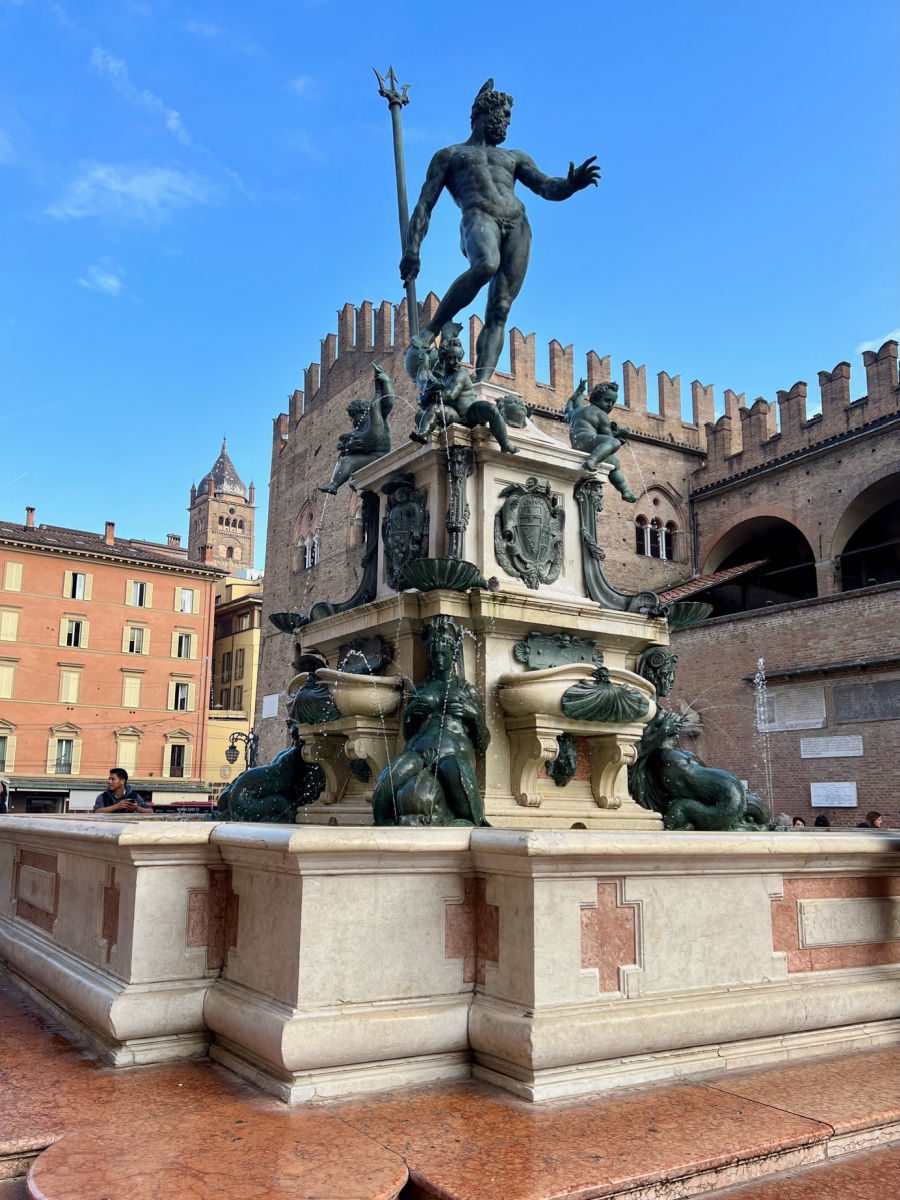
If you want to explore some of Italy’s food valley and sample some of the delicious culinary specialties of Emilia-Romagna, arguably Italy’s most famous region for gastronomic experiences, take the train to either Parma (famous for its cured meats and cheese), Modena (famous for its balsamic vinegar production), or Bologna (frequently hailed as Italy’s food capital). All of these cities can be reached in less than one and a half hours from either Milano-Centrale or Milano-Porta Garibaldi.
Verona and the Veneto
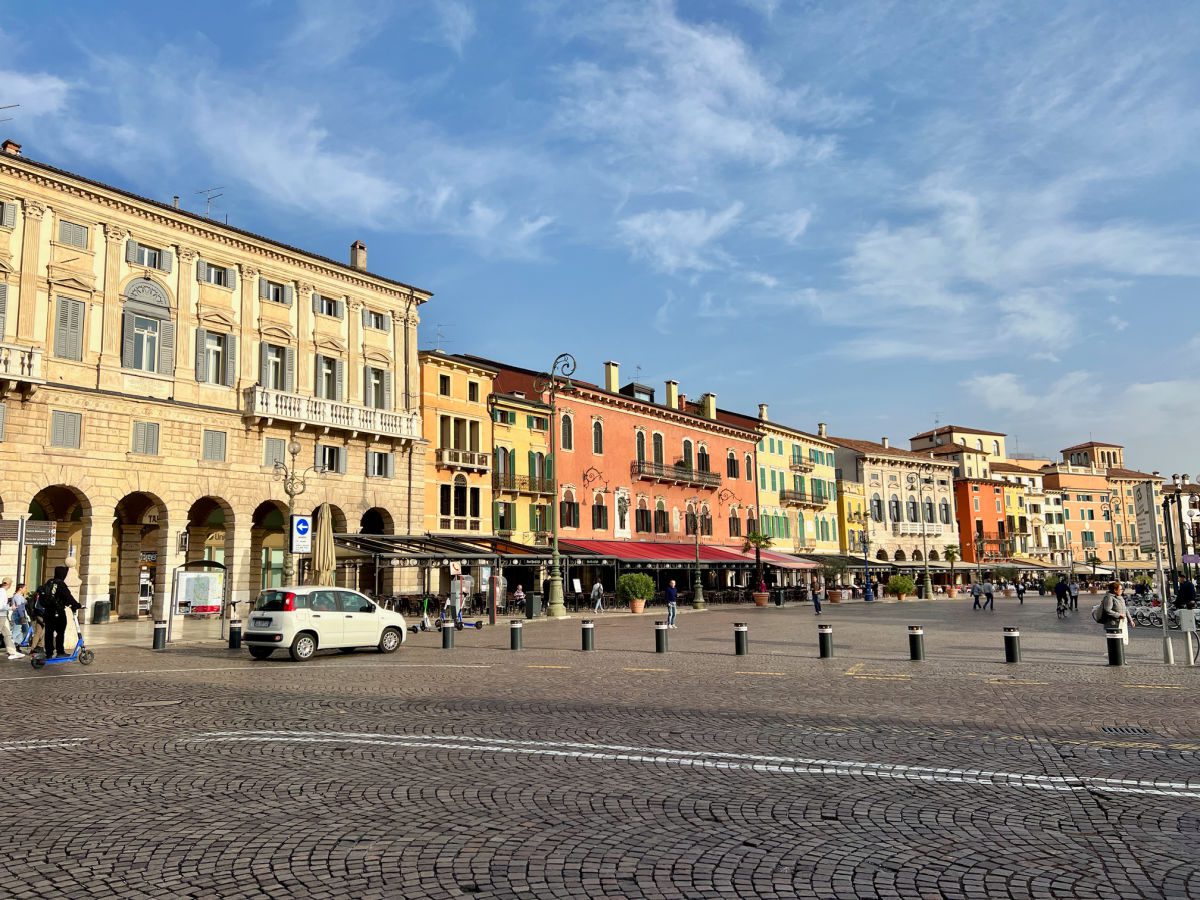
One of my favorite cities in Italy, Verona, is also possible to visit as a day trip from Milan. Trains take under two hours and leave from Milano-Centrale. Verona is highly worth a day trip or its own visit if time permits. The city is lovely and very easy to navigate. There are plenty of sights and architectural masterpieces, yet the city doesn’t feel overrun with tourists like nearby Venice.
Ligurian Coast
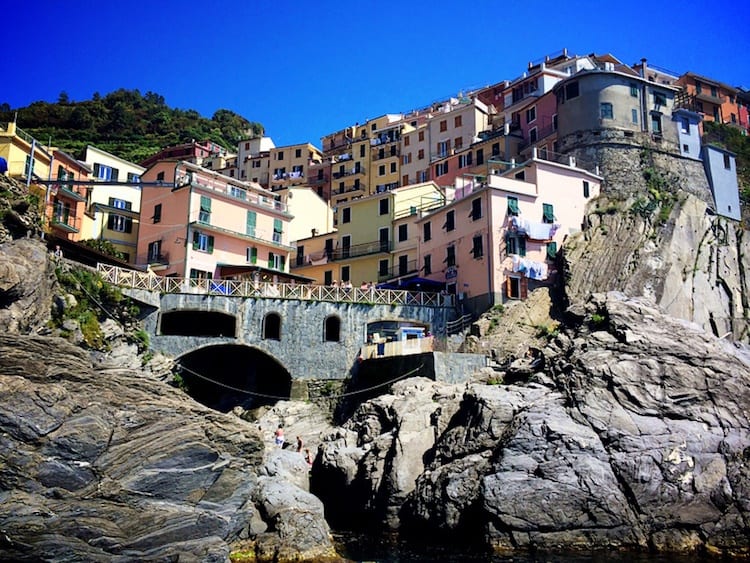
Italy’s magnificent and romantic Ligurian coastline, commonly known as the Italian Riviera, is perhaps second only to the Amalfi Coast in its beauty. The seaside towns of Portofino, Rapallo, Levanto, and the largest of the Cinque Terre’s five towns are all accessible by train from Milano-Centrale in three hours or less.
Trains to the Cinque Terre stop in Monterosso, from which you can continue on to the other four towns by regional train or on foot. Portofino is accessible from the train station at Santa Margherita Ligure by bus. While all of these places can theoretically be done as day trips, it might be worth spending more than just one day relaxing in some of the most aesthetically pleasing places on earth. If you are short on time, book a day tour to the Cinque Terre.
Getting to and from Milan
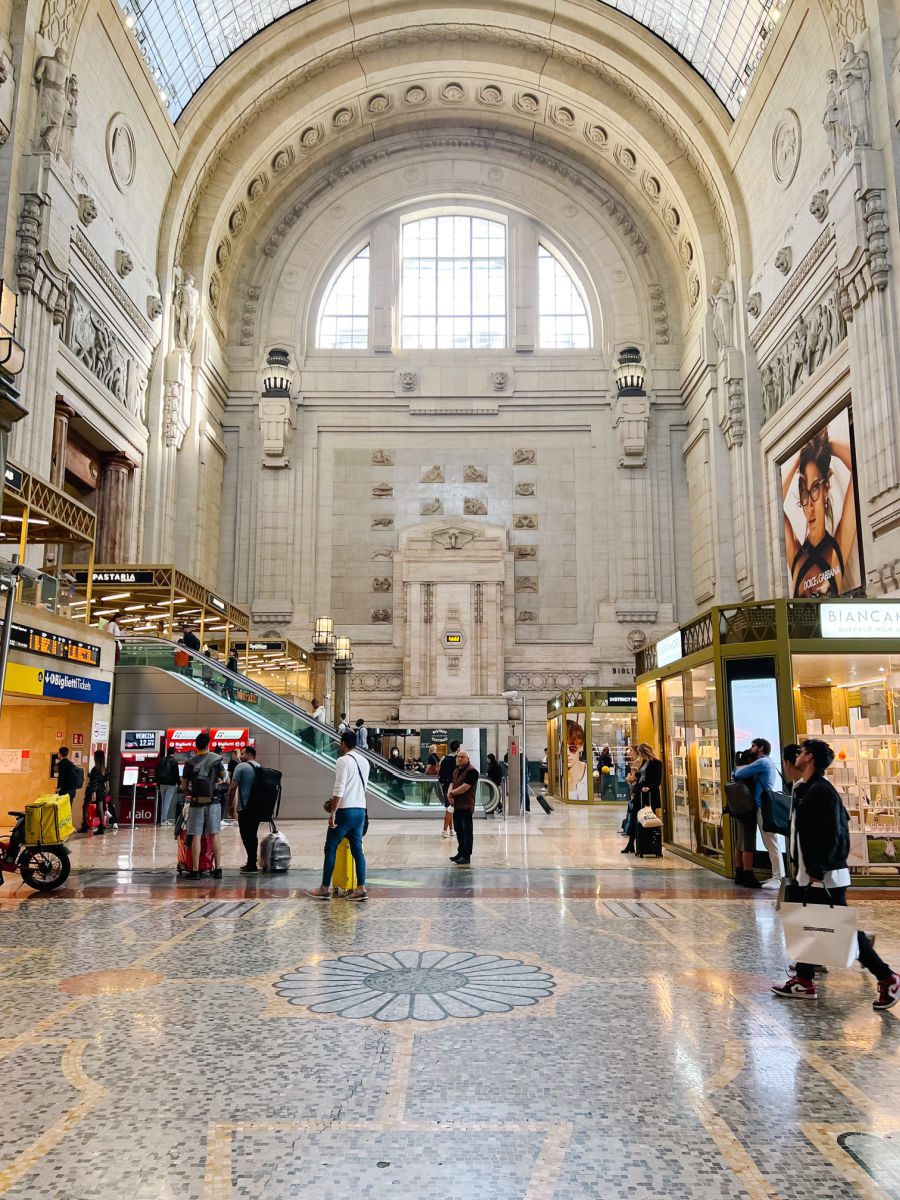
Milan is an ideal location to start or end a trip to Italy, or to other places in Europe, due to its position as a major national and international transportation hub in Northern Italy. Milan is well-connected to most major and many minor Italian cities and destinations frequented by American tourists by rail, bus, and flight. Milan has three main airports.
Milan Malpensa Airport is Milan’s main international airport. Many travelers to Milan originating in the United States will arrive at Malpensa Airport, as it is where all nonstop flights from the United States to the city land.
After landing at Malpensa Airport, the easiest way to get to the heart of Milan is by taking the train from one of the Malpensa Airport stations (which one will depend on which terminal the airline you book with operates from) to Milano-Centrale or Milano-Cadorna. Milano-Central is to the north of the Centro Storico, or the historic center of Milan, in a district where many hotels are found.
Cadorna Station is to the west of the Centro Storico next to Castello Sforzesco. Both Cadorna Station and the Central Station have adjoining metro stations, making much of Milan easily accessible from either station. Taxis can be hailed or booked in the Uber app as well.
Linate Airport, located to the east of the city, also serves some short-haul domestic and international routes in Italy, continental Europe, England, and Ireland. Unlike Malpensa Airport, Linate is not situated conveniently on a rail line, so to get to the heart of Milan from Linate Airport, travelers will need to take a bus and/or taxi directly to their final destination in Milan.
Finally, Orio al Serio International Airport, or the Milan-Bergamo Airport, is located a significant distance away from the heart of Milan, just outside the city of Bergamo. The Bergamo Airport is used almost exclusively by low-cost carriers that offer flights to a variety of destinations in Europe, the Middle East, and North Africa. Bergamo Airport is also not on a rail line. Buses from the airport will take travelers directly to the center of Milan or to the city of Bergamo, where passengers can continue on to Milan via rail, or you can opt for a private transfer.
High-speed rail also links Milan with cities outside of Italy including Zürich and Paris. Italy has two main railway companies. Trenitalia, the national railway system, offers high-speed, intercity, regional, and local services throughout the entire country. Italo, a private railway company, offers select high-speed services throughout Italy at prices that are often competitive with the high-speed services that Trenitalia offers.
Milan Travel Tips
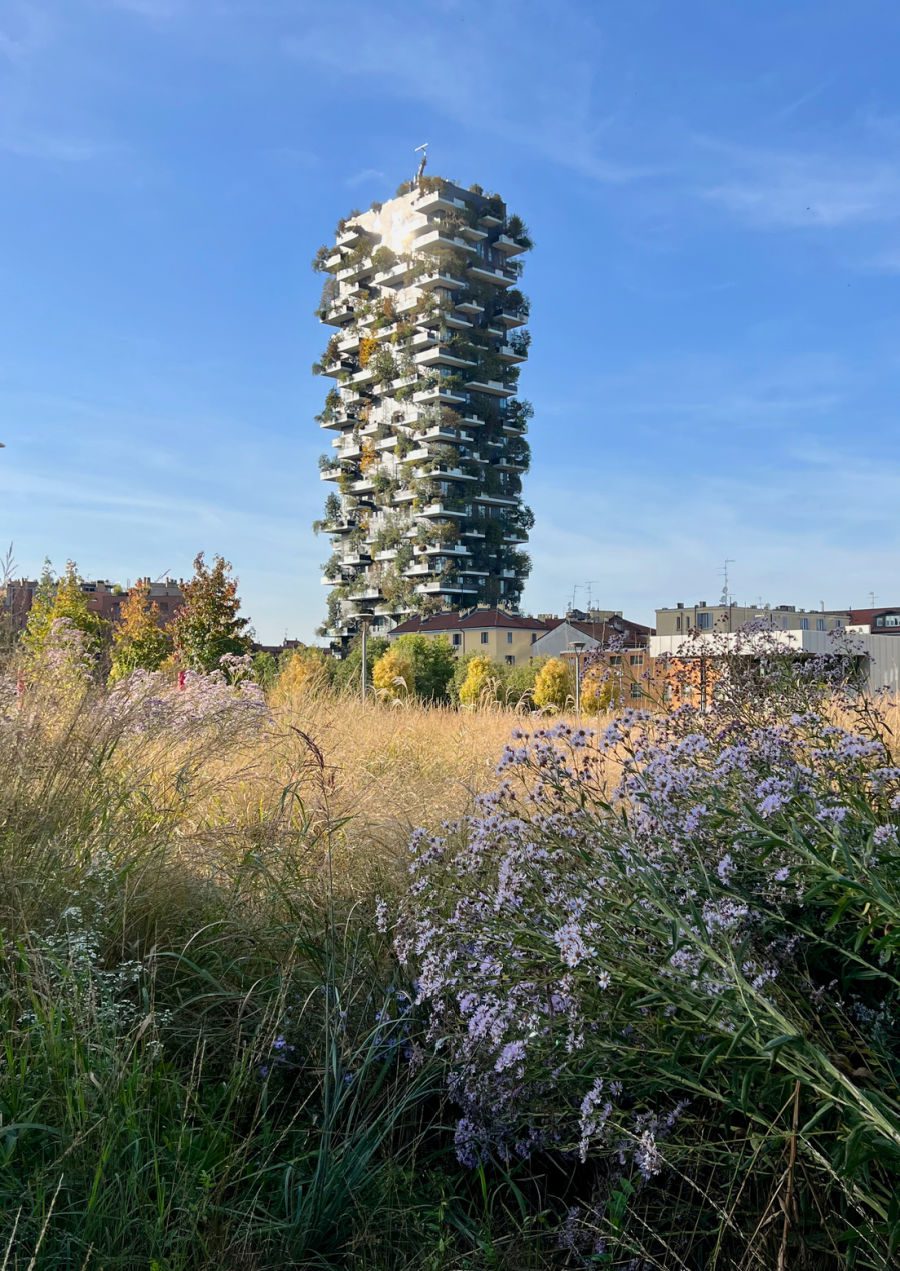
- Milan’s metro only takes small bills (nothing larger than €10), so try to keep some change on hand if you plan to take the metro. Foreign credit cards are also difficult to use to get metro tickets
- Book everything you want to do online and in advance (especially seeing The Last Supper or visiting the Duomo terraces)
- It is not customary to tip in Italy other than maybe rounding up the bills at restaurants, as there is already a coperta or table cover added to your meal cost
- Most museums in Milan are closed on Mondays
Visiting Italy?
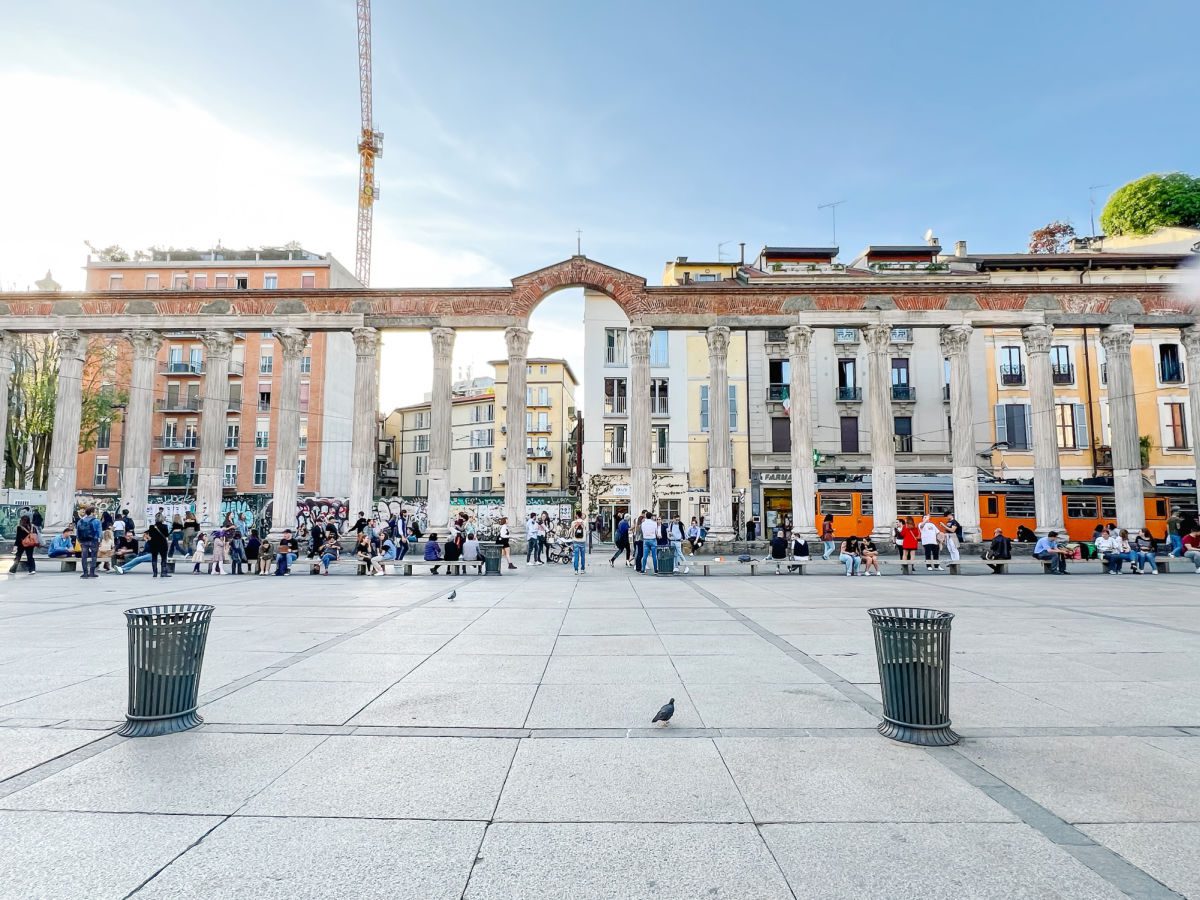
If you are planning a trip to Italy, here are some other articles that may help. If you need help planning your trip, I’m happy to introduce you to an Italy expert travel advisor.
- Rome: 5-day itinerary, guide to Rome hotels with pools, where to eat with kids, off-the-beaten-path sights in Rome
- Florence: 3-day itinerary
- Bologna: Bologna in one day
- Venice: 3-day itinerary
- Tuscany: tips for booking a wine tour, favorite Tuscan towns, Siena day trip
- Umbria: Orvieto and Assisi
- Amalfi Coast: Capri, Positano, and Ravello
- Tips for driving in Italy
- How to plan your Italy budget
Save this to Pinterest
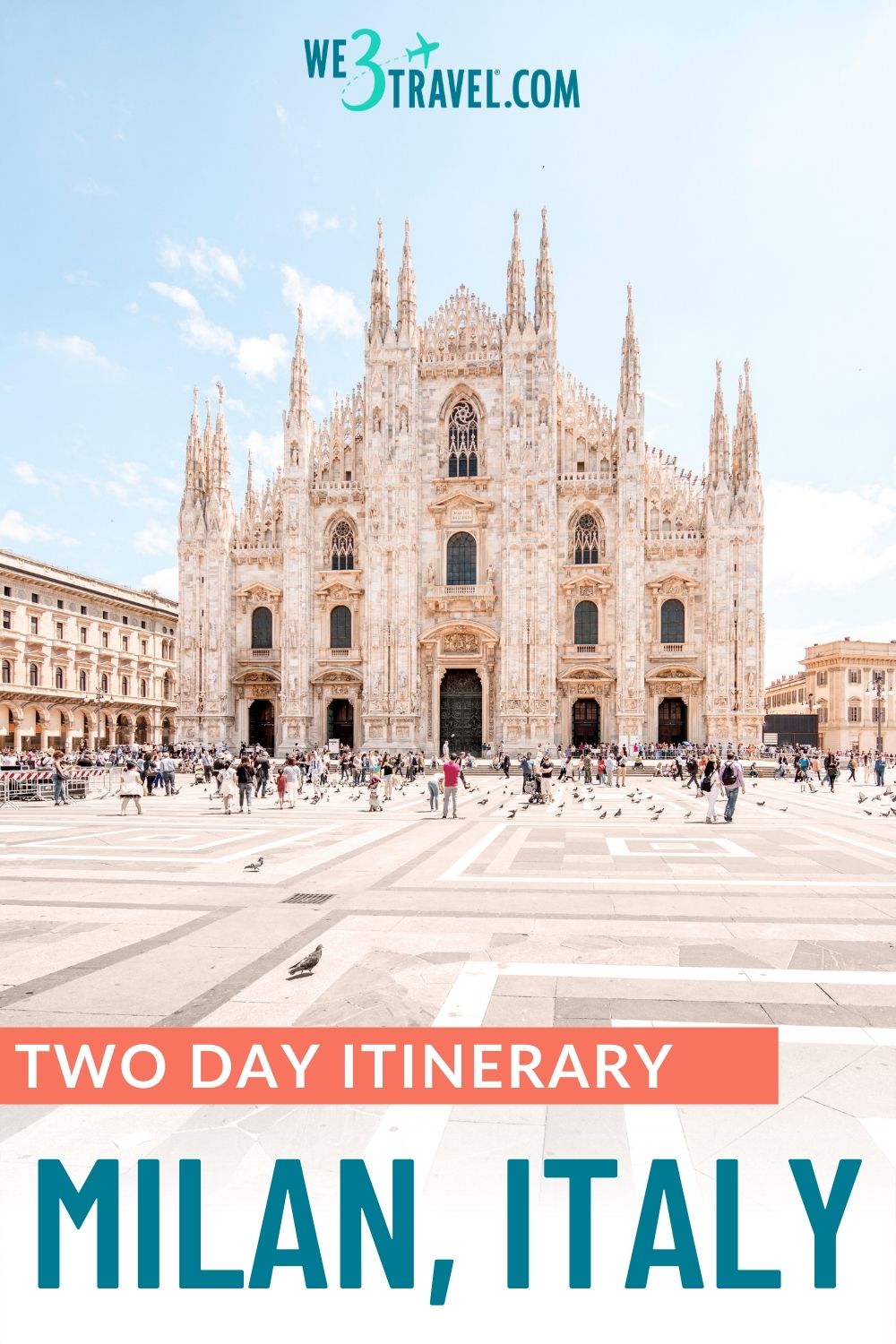

Tamara Gruber is the Founder and Publisher of We3Travel. A former marketing executive and travel advisor, Tamara is an award-winning travel writer and recognized expert in family travel. Tamara is a member of SATW and the Adventure Travel Trade Association, and serves on the Board of the Family Travel Association. She is also the publisher of YourTimetoFly.com and the co-host of the Vacation Mavens travel podcast.

